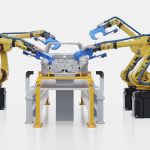Forward-thinking supply chain leaders are transforming Scope 3 reporting into a powerful tool for resilience, performance, and competitive advantage.
Once dismissed as a reporting burden, Scope 3 emissions tracking is emerging as a source of operational insight and strategic leverage. As regulatory frameworks like the EU’s Corporate Sustainability Reporting Directive and California’s Climate Corporate Data Accountability Act come into force, supply chain leaders are under mounting pressure to account for emissions well beyond their own walls—from suppliers and freight partners to product use and disposal.
What was once considered an ESG side task now sits at the heart of how progressive organizations build smarter, leaner, and more resilient supply chains.
Scope 3 as a Source of Supply Chain Intelligence
The best companies have moved beyond compliance. They’re using Scope 3 emissions data to inform real decisions—on supplier performance, network design, and investment prioritization. When emissions hotspots are mapped properly, they reveal far more than carbon intensity; they highlight operational vulnerabilities, sourcing inefficiencies, and supplier relationships that may not withstand future regulatory or environmental shocks.
These insights are already being used to strengthen continuity planning and refine category strategies. In fact, several global manufacturers are now integrating emissions metrics into supplier scorecards—not just to improve ESG outcomes, but to flag financial or reputational risks that wouldn’t otherwise surface through conventional procurement analysis.
The value of Scope 3 intelligence also lies in its specificity. Industry benchmarks are no longer enough. Even within the same sector, two companies can have radically different Scope 3 footprints depending on tier-2 and tier-3 supplier geography, materials mix, or product lifecycle design. The move away from averages and toward supplier-specific emissions data is what allows emissions tracking to become truly operational—embedded into how procurement evaluates risk, and how supply chain leaders build agility into their networks.
From Data Bottleneck to Design Input
Much of the hesitancy around Scope 3 reporting stems from its perceived data burden. But that’s beginning to shift. AI and automation technologies are now being deployed to streamline emissions calculations, simulate sourcing and routing decisions, and bridge the data gaps that once made Scope 3 impractical at scale.
Digital platforms are increasingly able to model emissions where primary data is missing, generate digital twins to visualize carbon impact in real time, and create unified datasets that connect procurement, operations, and sustainability functions. This isn’t about checking a box. It’s about making carbon data a functional input in how supply chains are designed, optimized, and stress-tested.
In mature organizations, emissions metrics are being reviewed alongside cost, lead time, and service performance—moving sustainability from an annual reporting burden to a continuous driver of supply chain performance. And because AI systems can update emissions models in near real-time, supply chain leaders can now anticipate where their next pressure point may arise, whether from incoming regulation or shifting stakeholder expectations.
From Emissions Mapping to Supply Chain Reengineering
The most forward-looking supply chain leaders aren’t simply visualizing their emissions—they’re using that visibility to redesign how their supply chains actually work.
Here’s where the real shift is happening: Emissions data is starting to influence structural decisions that were once based only on cost or service—like where to source materials, how to allocate production across regions, and which suppliers to grow with or phase out. One global industrials firm recently found that Scope 3 data pointed them toward a more carbon-intensive supplier in the short term—yet switching to that supplier enabled them to consolidate shipments and reduce overall emissions and freight costs across the network. The insight came not from instinct, but from data they weren’t using two years ago.
This is the level of thinking that separates compliance from competitiveness. Scope 3 isn’t just a signal of ESG maturity—it’s becoming a lens through which smarter operational trade-offs are made. For supply chain leaders serious about building resilience and agility into their ecosystems, it’s no longer a burden. It’s a blueprint.





